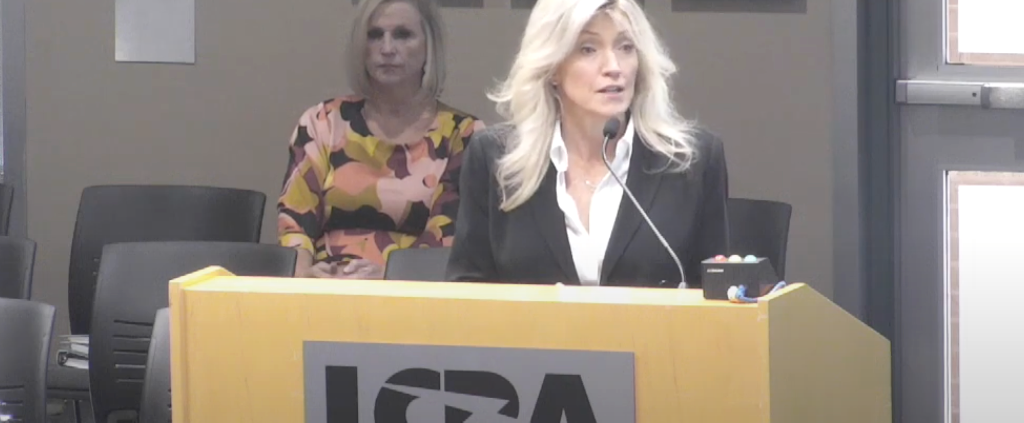LCRA looking into basin drainage by stock tanks and small ponds

Shannon Hamilton, the new executive director of the Central Texas Water Coalition, introduced herself to the Lower Colorado River Authority Board of Directors during the public comment section of the LCRA Water Operations Committee meeting Nov. 16. Livestream screen capture
New technology that analyzes evaporation and the amount of water drained from the Lower Colorado River basin by small ponds and stock tanks will help the LCRA protect future water needs for its customers, according to a recent meeting of the authority’s Water Operations Committee. The meeting was the first of three back-to-back sessions held at LCRA’s Austin headquarters Nov. 16.
During a six-minute-long meeting of the LCRA Transmission Service Cooperation, the board gave the thumbs-up to a $1.9 million capital improvement project to transition 39 of its substations to the Pedernales Electric Cooperative. PEC is going into the transmission business as soon as its new transmission center in Leander is completed in 2023.
That short meeting was followed by an eight-minute regular meeting of the board, when members voted to temporarily increase the authority’s firm water commitment for in-house industrial and irrigation purposes to 500 acre-feet per year. It is currently 200 acre-feet per year, but will drop back to 100 acre-feet per year when the Arbuckle Reservoir in Wharton County becomes fully operational in the fall of 2024.
The water is needed for construction and vegetation regrowth at Arbuckle, the first new water supply reservoir in the LCRA river basin in decades. With a 5-mile circumference, Arbuckle will be able to store 40,000 acre-feet of water, which can be drained and refilled multiple times a year.
“When operating with the full system, including the Buchanan and Travis reservoirs, that amounts to 90,000 acre-feet of new supply per year,” said Monica Masters, LCRA’s vice president of water resources. “It allows LCRA to capture releases no longer needed due to changing needs downstream.”
The day began with a two-hour-plus annual update from LCRA staff to the Water Operations Committee. The board heard updates on basin conditions, water supply planning initiatives, and 2023 interruptible rates.
The U.S. Corps of Engineers is working with the LCRA on an evaporation study that uses real-time weather information from a weather station deployed on Lake Buchanan.
Texas A&M University has joined with the authority to identify changes to the inflows in lakes Buchanan and Travis.
Perhaps the most anticipated study is being done by the University of Texas Marine Science Institute, which is using geographic information system mapping and satellite imagery to determine the number of small ponds or stock tanks drawing water from the lakes.
“No one looks at it, but everyone acknowledges that it’s a concern,” said John Hofmann, executive vice president of water at LCRA.
The board ended its long day with an executive session of just over an hour. No action was taken when it reconvened in open session.










Leave a Reply
Want to join the discussion?Feel free to contribute!